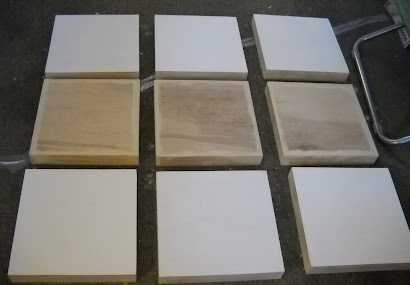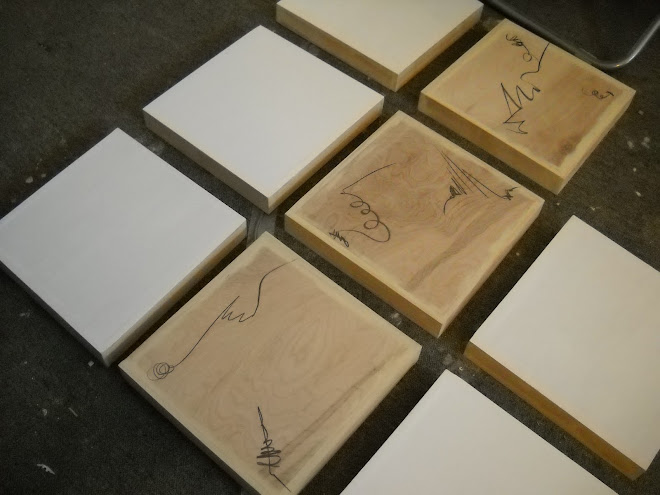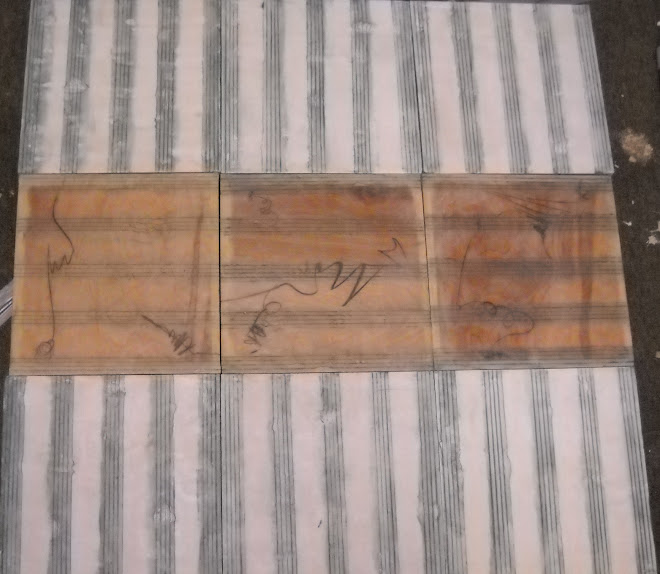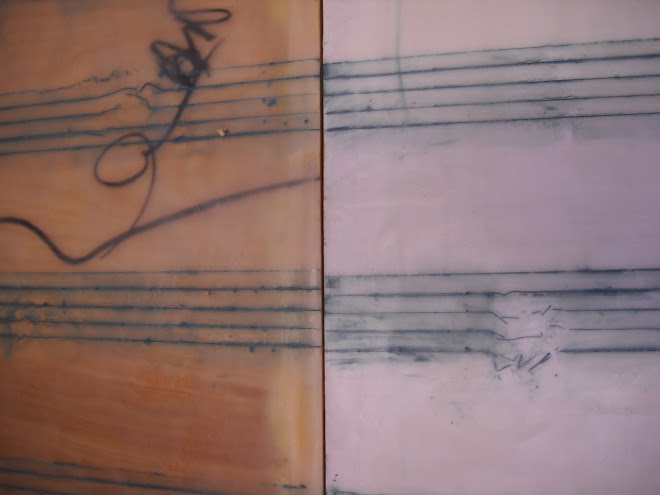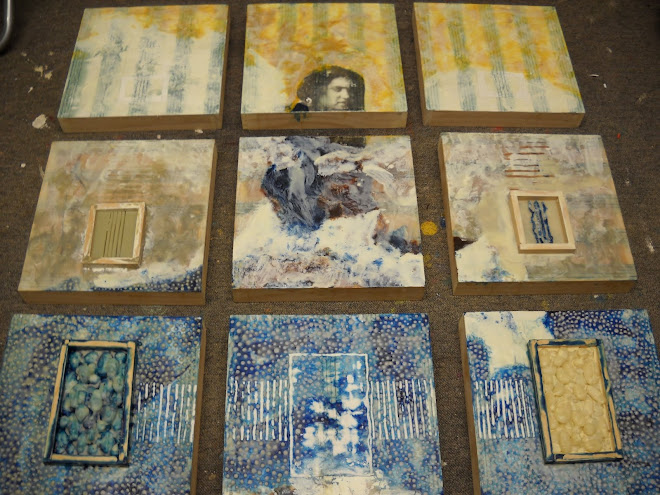I've been balancing work, family, and some hand issues (from car accidents) this semester so time management has been kicking my a$$. Since the Works In Progress show in February I have been spending some time putting together my committee as well as having a guest artist visit my studio. In the process speaking with Alf Ward and Shaun Cassidy (along with Taro) helped me step back and look at my most recent work which I had been struggling with.
The pieces in the show looked good visually but still had real issues of relationship to the disparate pieces (groups) as well as the concept. It was Alf's discussion with me that really cinched what was the problem - I split the larger works from the smaller works and the combining of those groups with each other helped me both visually (process-wise) and conceptually. So I am able to work more in line with both my original concept and exploration of the materials which was causing so much concern earlier in the semester.
In addition to the my artwork, I have been inundated with anatomy and figure pedagogy class. Putting together my "teaching figure I" book is actually been very helpful with the anatomy class. My hand/arm issues have caused me much stress in trying to create the armature for anatomy with the plasticine being much to hard for me to adequately use the material. I have also had to slow down on the drawing as well but have found ways to compensate and as such I have also started the large scale figurative drawings to use as preliminary work for the large panels I hope to start and work on over the summer.







